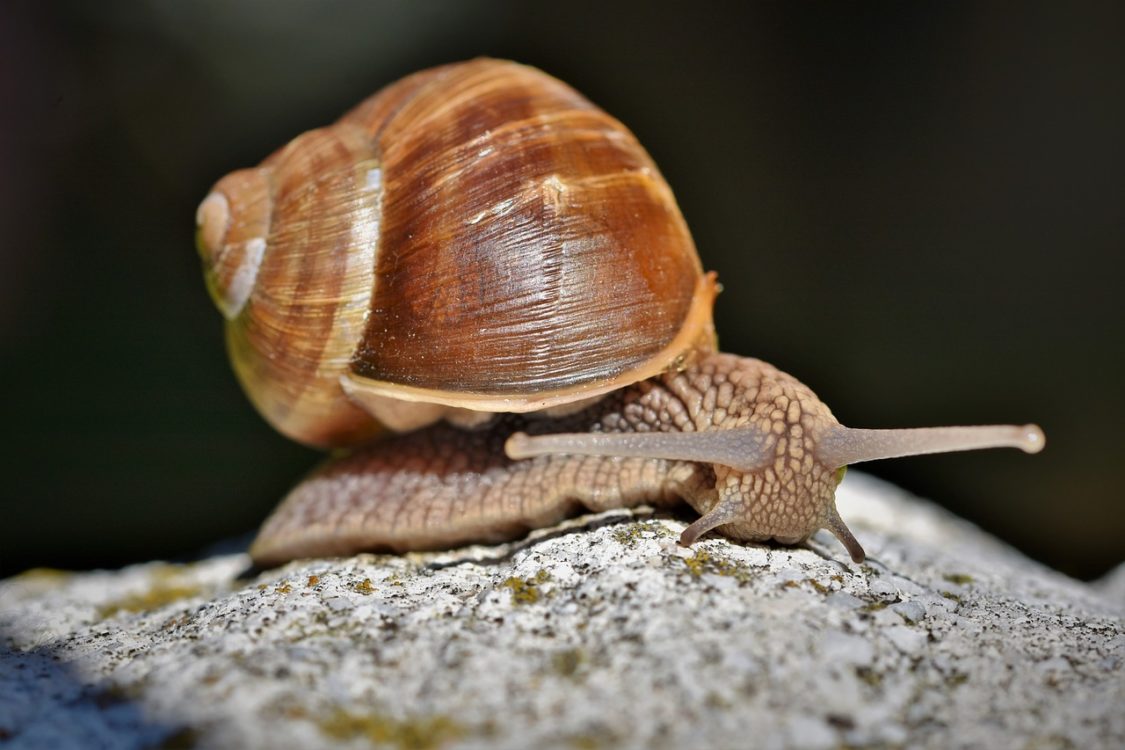Snails in Thailand – Most Commonly Seen & Eaten

The Mystery Snail, which is known in Thailand as Hoi Khom (หอยขม), Hoi Joop (หอยจุ๊บ) or Hoi Doot (หอยดูด) is the snail most commonly seen in Thailand. It is found near ponds, canals, and flooded rice fields during the rainy season. Mystery Snails are also called River Snails, Pond Snails, or Marsh Snails. Some have bands, while others do not. They also vary in size from medium to large, and are a member of the Viviparidae family of snails.
There perhaps could be a snail that is technically more abundant in Thailand, but if you see a snail somewhere in the countryside, it is likely a Mystery Snail. The snail takes its name from the fact that females give birth to fully developed young (complete with shells) that “mysteriously” appear. But if you see one, you can take as a harbinger of new Thai mysteries to be unveiled. You can identify them by the whorls which lead to a point.
Isaan Thai Curry with Snails
In Northeast Thailand (The Culinary Capital of Thailand) the mystery snail is used to make a delicious (but rare) dish called Gaeng Om Hŏi Khŏm Bai Chá Ploo (แกงอ่อมหอยขมใบชะพลู). This is an Isaan snail curry with betel leaves, and one not easy to find on a Thai restaurant menu due to the complicated preparation process. It also is only prepared during the rainy season when snails are more abundant. But if you are lucky enough to find it on offer, it is a must try!
Betel leaves are sometimes chewed by old Isaan people as a stimulant, and this curry does seem to have an invigorating effect. Younger Thais rarely chew betel leaves because it turns your mouth and teeth red, which makes it tough to attract a boyfriend or girlfriend. Betel leaves aren’t frequently used in preparing Isaan dishes, but when they are, they add a distinctive peppery and spicy accent to the dish, which is delicious when balancing out and/or enhancing other flavor accents. In this case the betel leaves are mixed with garlic, shallots, lemon grass, basil, sticky rice, and other ingredients.
The Meaning of Thai Snail Names
The Thai word “hoi” (หอย) refers to any shelled creature, such as a snail, clam, or mussel. The reason that Thais refer to the freshwater Mystery Snail as Hoi Joop and Hoi Doot is that the word “joop” means kiss in Thailand, and the word “doot” means suck (read more about how Thais from words in our article on the Thai personality).
When Thais use this snail in curries, the entire snail is usually cooked in the dish. The person must then lift the snail out of the curry and kiss or suck the cooked snail out of the shell. However, in the Hoi Khom Curry with Betel Leaves, the snail is sometimes removed from the shell and chopped up during preparation. The snail itself is a nutritious and high protein ingredient that is also low in fat. Thai folk medicine has used the snails in preparing concoctions that heal digestive issues. The other Thai name for the Banded Mystery Snail, “Hoi Khom,” means bitter snail.
Snail Symbolism in Thailand
In ancient Thai tradition the snail is a symbol that life and time are not linear — that your soul evolves in cycles. The snail also is a reminder to live cautiously and alert, that there are advantageous times to be outside in the world and other times when it’s best to withdraw to the safety of your home and family.
Buddhist legend has it that 108 snails climbed upon the head of the Buddha to shade his head from the hot sun during his enlightenment, and died from the heat. Thus snails are viewed as holy martyrs. And the tight curly hair you sometimes see in statues of the Buddha in Thailand look like the whorls of tiny snails.
What is the Largest Snail in Thailand?

The largest snail in Thailand is the Giant African Land Snail, which can have a conical shell up to 8 inches in length. There are also other African land snails in Thailand which have distinctive dark bands. These African snails have become a hot commodity in SE Asia, with their slime (which is rich in collagen) being used for face serums and moisturizers. These large land snails are often called Hoi Tak (หอยทาก), meaning slug with shell, in Thai.
- The 1st English Dhamma Talk Project, Sakon Nakhon Thailand - July 8, 2025
- Affirmations in Buddhism & Thailand - June 7, 2025
- Speak Thai Naturally Without the Gymnastics - April 20, 2025




